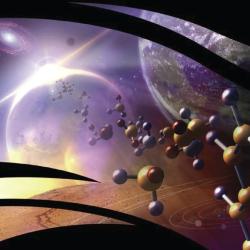Source Institutions
Source Institutions
Add to list Go to activity
Activity link broken? See if it's at the internet archive

In this activity (on pages 13-16 of the PDF) learners investigate three mystery samples to see which one contains life. The three samples are sand, sand and yeast, and sand and antacid. During the activity, learners add sugar (food) and warm water to the samples, and observe that the sand (non-living) does not change, the yeast (living) starts to produce bubbles continuously, and the antacid (non-living) bubbles and then slows to a stop. The difference between a chemical reaction that runs down and a chemical reaction maintained by a living organism can be discussed.
- 10 to 30 minutes
- 30 to 45 minutes
- 1 cent - $1 per group of students
- Ages 4 - 14
- Activity, Lesson/Lesson Plan
- English
Quick Guide
Materials List (per group of students)
- 3 clear containers
- 1 container of warm tap water
- 3 tablespoons of sand
- 3 teaspoons of sugar
- 1/2 packet of active dry yeast
- 1 fizzing antacid tablet, crushed
- hand lenses
- 3 small sheets of paper
- 1 spoon
- White board, chalk board, or large piece of chart paper and chalk or markers
Subjects
-
Earth and Space Science
- Astronomy
-
Life Sciences
-
Diversity of Life
- Protists and Fungi
-
Diversity of Life
-
Physical Sciences
-
Chemistry
- Chemical Reactions
- Chemistry of Life
-
Chemistry
-
The Nature of Science
-
The Scientific Process
- Conducting Investigations
-
The Scientific Process
Audience
To use this activity, learners need to:
- see
- touch
Learning styles supported:
- Involves hands-on or lab activities
Other
Includes alignment to state and/or national standards:
This resource is part of:
Access Rights:
- Free access
By:
Source Collection
- Science After School Consumer's Guide
Rights:
Funding Source:
- NASA, NAG5-13028
